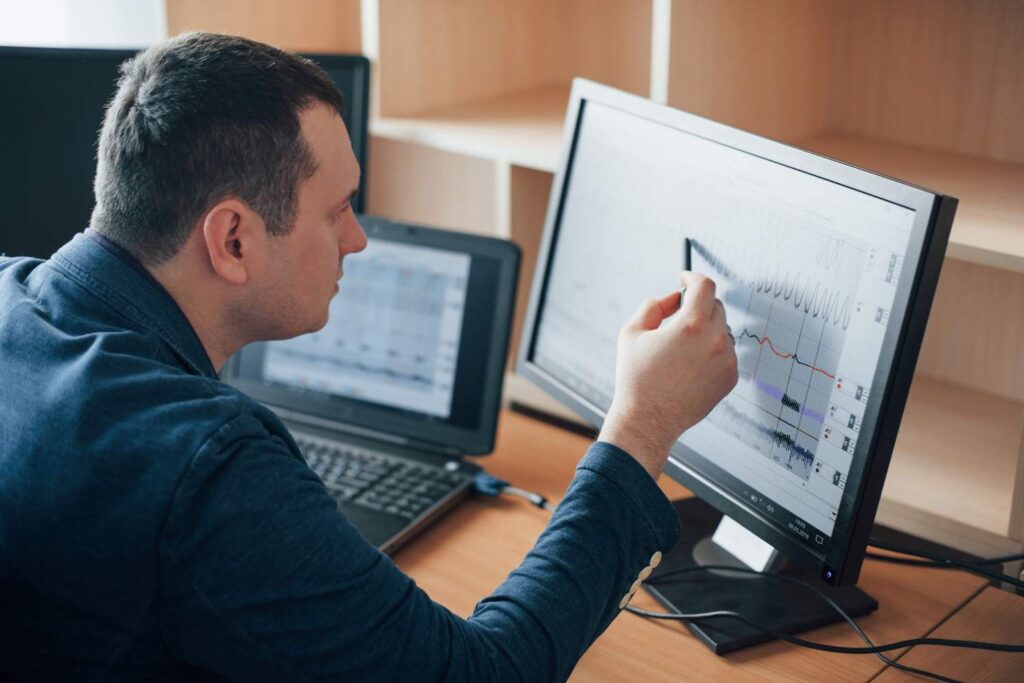In the fast-paced world of financial markets, speed, accuracy, and data-driven decision-making are everything. As global markets grow more complex, automated trading is no longer a luxury reserved for hedge funds—it’s becoming essential for individual traders, startups, and enterprises alike. At the heart of this evolution is a new wave of innovation led by trading software development companies. These firms are reshaping how we approach the markets by integrating AI, real-time data analytics, and high-performance architecture into the core of trading systems.
But what does the future hold for automated trading? Let’s explore the breakthroughs, challenges, and the critical role that software development plays in creating intelligent, responsive, and scalable trading solutions.
The Evolution of Automated Trading
Automated trading, or algorithmic trading, has been around since the late 1970s. Back then, it was mainly used for executing large institutional orders through predefined rules. Fast forward to today, and we’re looking at a system where machines trade autonomously, optimizing strategies in real-time with minimal human intervention.
This evolution has been driven by the exponential growth of computational power, cloud infrastructure, machine learning algorithms, and more recently, generative AI. Traders can now test, deploy, and iterate strategies rapidly, thanks to platforms developed by innovative trading software development companies.
The Core Components of Modern Trading Software
To understand where the future is headed, it’s important to grasp what modern trading systems already offer. A sophisticated automated trading platform typically includes:
-
Market Data Feed Handlers: These provide access to real-time and historical data from multiple exchanges.
-
Backtesting Engines: Enables traders to simulate strategies using historical data.
-
Execution Algorithms: Sophisticated order types to optimize entry and exit with minimal slippage.
-
Risk Management Modules: Includes stop-loss, take-profit, and capital exposure logic.
-
Analytics Dashboards: Real-time performance tracking, PnL (Profit & Loss), and trade auditing.
These components must be built with high reliability and low latency in mind, especially for high-frequency trading (HFT) environments. A capable trading software development company can deliver these systems tailored to diverse asset classes—stocks, crypto, forex, or commodities.
AI-Driven Innovation: The New Era of Intelligent Trading
The most exciting developments in trading software are now being powered by Artificial Intelligence. Here’s how:
1. Predictive Analytics Using Machine Learning
Advanced machine learning models are increasingly being used to identify patterns and predict price movements. These models digest vast amounts of structured and unstructured data—price history, news sentiment, social media trends, macroeconomic indicators—and turn them into actionable insights.
2. Reinforcement Learning in Strategy Optimization
Reinforcement Learning (RL), a subset of AI, has revolutionized the development of trading bots. In RL-based systems, trading agents learn from their environment and improve strategies by trial and error—just like AlphaGo mastered the game of Go.
These agents evaluate thousands of scenarios before selecting the optimal trade execution path, making them more adaptive than rule-based bots.
3. Generative AI for Strategy Simulation
This is where the lines blur between creative intelligence and analytics. Generative AI consulting services are now being used to create simulated trading environments and synthetic data for rare market conditions—black swan events, flash crashes, or low-liquidity scenarios.
These simulations help in training robust AI models that perform even under extreme volatility, making trading platforms more resilient.
Blockchain Integration and Smart Contracts
The decentralized finance (DeFi) space is opening new frontiers in automated trading. Blockchain integration allows for greater transparency, lower fees, and trustless execution of trades.
In particular, smart contracts are being employed for auto-settlements, eliminating the need for intermediaries. A trading platform with blockchain capabilities can seamlessly connect to decentralized exchanges (DEXs), liquidity pools, and NFT marketplaces—greatly expanding its use cases.
A reliable trading software development company will often offer blockchain integration as part of its service suite, allowing clients to leverage token-based incentives or governance mechanisms in their trading applications.
Cloud-Native and Scalable Architectures
Gone are the days of monolithic software. Modern trading systems are now cloud-native, allowing for:
-
Scalability: Auto-scaling to handle surges in trade volume.
-
Global Reach: Connecting to multiple exchanges and liquidity providers across geographies.
-
Disaster Recovery: Failover systems and redundant data centers to ensure uptime.
-
Speed: Low-latency execution through edge computing and co-location services.
These systems are typically built using microservices and containerized environments (e.g., Docker + Kubernetes), which enable faster deployment cycles and easier integration of new modules.
Regulatory Compliance Through Automation
As trading platforms scale, they must adhere to increasingly complex financial regulations—KYC (Know Your Customer), AML (Anti-Money Laundering), GDPR, and SEC or SEBI rules. This is another area where automation plays a critical role.
Automated compliance features often include:
-
Real-time monitoring and audit trails
-
Automated report generation for tax and regulatory filing
-
Transaction screening for suspicious behavior
-
Encryption and secure data storage
A skilled trading software development company ensures that these features are built into the architecture from day one, so that scaling does not mean added compliance headaches.
Customization and White-Labeling
One of the major innovations in this space is the ability to offer white-labeled trading platforms. Startups and fintech entrepreneurs can launch branded exchanges or investment platforms without building everything from scratch.
This modular approach allows businesses to select:
-
The asset classes they want to offer
-
The geographic markets they want to serve
-
The UI/UX design aligned with their brand
-
The specific strategies they want to pre-load
This flexibility is especially useful for companies operating in niche markets—carbon credits, collectibles, or prediction markets.
Human-in-the-Loop Systems
While full automation is a powerful concept, there is growing interest in Human-in-the-Loop (HITL) trading systems. These platforms allow traders to intervene, approve, or override automated decisions.
For example, a system might flag a high-risk trade and request manual confirmation. This ensures compliance, improves transparency, and builds trust—particularly in enterprise environments or prop trading desks.
Such systems blend the best of both worlds: the efficiency of automation with the oversight of human expertise.
Challenges That Remain
Despite the innovation, automated trading platforms still face a few hurdles:
-
Data Quality: Inaccurate or delayed data can wreak havoc on algorithmic strategies.
-
Black-Box Risk: Some AI models lack explainability, making it hard to trust decisions.
-
Latency: Even milliseconds of delay can mean the difference between profit and loss in HFT.
-
Security: Sophisticated systems are also attractive targets for cyberattacks and fraud.
-
Overfitting: Algorithms that perform well in backtests may fail in live trading.
Addressing these issues requires deep domain knowledge, which is why partnering with an experienced trading software development company becomes vital.
What’s Next? The Rise of Autonomous Agents
Looking ahead, we’re approaching a future where autonomous agents handle everything from portfolio rebalancing to cross-asset arbitrage with minimal oversight. These agents will:
-
Monitor global news and sentiment in real time
-
Analyze trading behavior across different markets
-
React instantly to macroeconomic announcements
-
Make probabilistic decisions based on contextual awareness
Generative AI consulting services will further enhance these agents by offering creative and analytical decision-making capabilities, making them not just fast—but smart.
Conclusion
The future of automated trading is incredibly bright—and it’s being written in code.
From AI-driven analytics to smart contracts, from cloud-native infrastructure to intuitive interfaces, trading software development companies are leading the charge. They’re not just building tools—they’re redefining how capital flows through the global economy.
As the industry grows more intelligent and interconnected, the question is no longer whether you should adopt automation—but how fast you can implement it.
At FX31 Labs, we specialize in delivering next-generation trading platforms, integrating AI, blockchain, and scalable architecture tailored to your business goals. We also offer generative AI consulting services to help you simulate market conditions and build resilient strategies.
Whether you’re a startup building your first trading app or an institution looking to modernize legacy systems, the future is yours to trade—smartly, securely, and autonomously.


